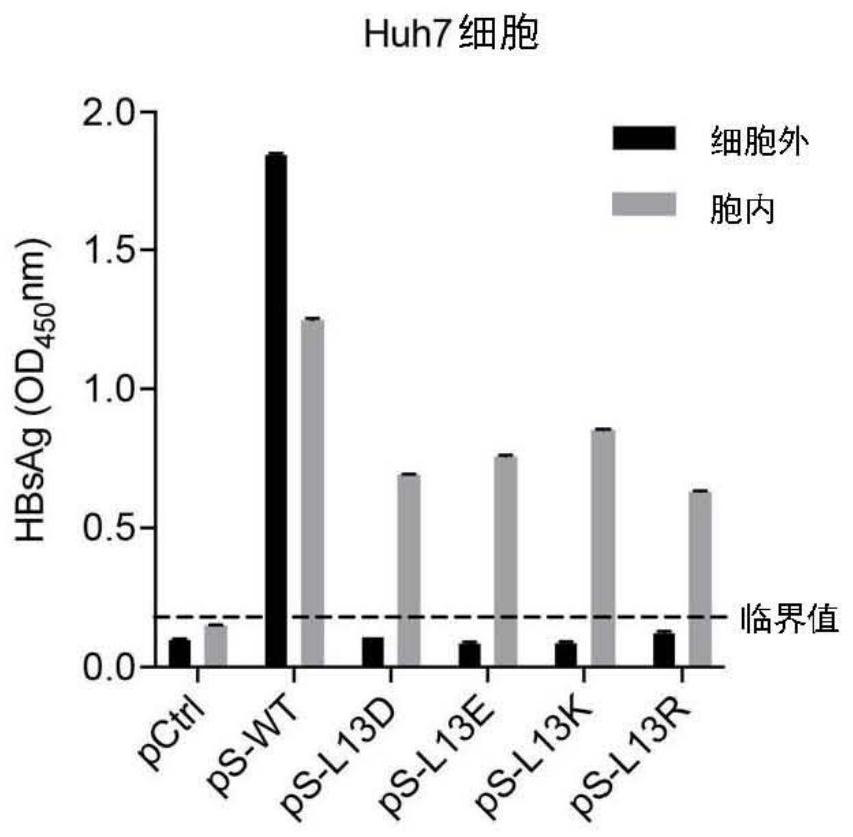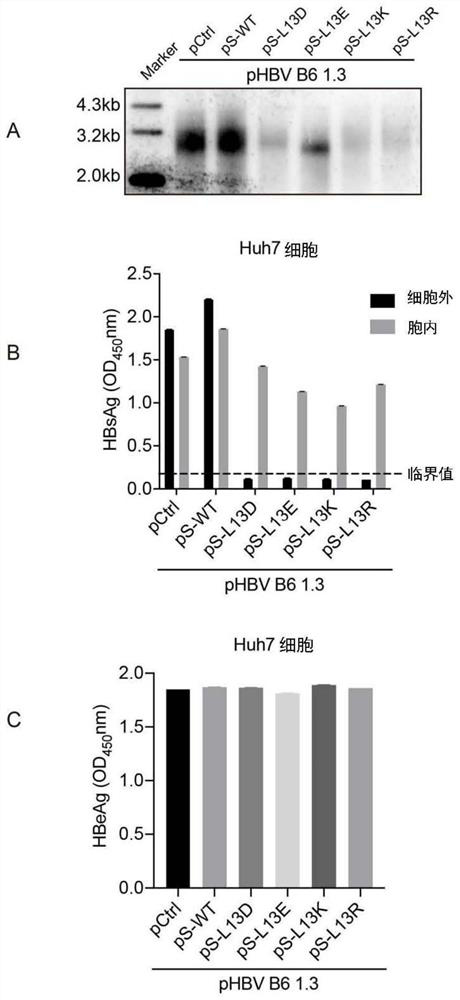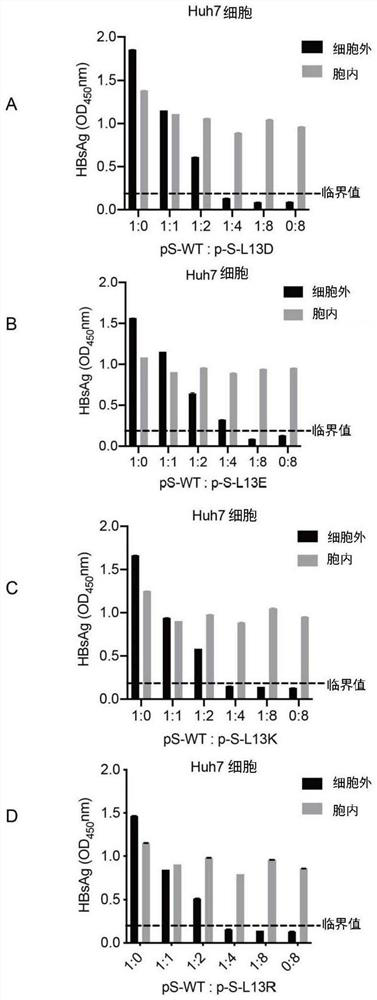Hepatitis B virus surface protein mutant and application thereof in resisting hepatitis B virus
A protein mutant, hepatitis B virus technology, applied in the field of biomedicine, can solve the problems of vaccine immune escape and HBsAg detection failure
- Summary
- Abstract
- Description
- Claims
- Application Information
AI Technical Summary
Problems solved by technology
Method used
Image
Examples
Embodiment 1
[0053] Example 1: Construction and expression verification of pS-WT and mutant recombinant plasmids
[0054] In this example, the S protein of hepatitis B virus was taken as an example to carry out the construction and expression verification of its recombinant plasmid.
[0055] The construction of recombinant plasmid, it comprises steps:
[0056] 1. Construct pS-WT recombinant plasmid on the backbone of pCDNA3 vector. The S gene of the HBV B6 strain was inserted between BamHI and NotI by enzyme digestion and ligation, as follows: the pHBV B6 1.3 replicon was used as a template, and S-WT was obtained by PCR amplification experiment and gel recovery. Gene fragment. PCR primers are S-F and S-R.
[0057] S-F: 5'-CGCGGATCCATGGAGAACATCGCATCAGGACT-3' (SEQ ID NO: 30)
[0058] S-R: 5'-ATTTGCGGCCGCTTAAATGTATACCCAAAAGACAA-3' (SEQ ID NO: 31)
[0059] The PCR reaction system is as follows:
[0060]
[0061] The PCR reaction conditions are as follows: 98°C for 3min; 98°C for 1...
Embodiment 2
[0077] Example 2: Effects of the S-L13R / D / E / K mutant on the replication of the HBV replicon pHBV B6 1.3 and the expression and secretion of HBsAg at the cellular level
[0078] Use Southern blot to detect HBV replication ability, use ELISA to detect the expression and secretion of HBsAg
[0079] 1. Co-transfect Huh7 cells with pHBV B6 1.3 and pS-WT, pS-L13R, pS-L13K, pS-L13E, pS-L13D and pCDNA3 (pCtrl) constructed according to the method of Example 1 in a ratio of 1:2, After 72 hours of transfection, the cell supernatant and cell lysate were collected to detect HBV replication ability by Southern blot, and the expression and secretion of HBsAg were detected by ELISA (the steps were the same as those in Example 1).
[0080] 2. The Southern blot method was used to detect HBV DNA in the core granules of cells. Methods as below:
[0081] (1) Cell lysis: the cells were lysed by the same cell lysis method as in Example 1.
[0082] (2) DNase I treatment: collect the cell lysate ...
Embodiment 3
[0105] Example 3: Effects of S-L13R / D / E / K mutants on the expression and secretion of wild-type S protein at the cellular level
[0106] In order to verify whether the S-L13R / D / E / K mutant has a direct inhibitory effect on the expression and secretion of the wild-type S protein, in this example, plasmids such as pS-WT and pS-L13R were divided into 1:0 and 1: 1. Co-transfect Huh7 cells at the ratio of 1:2, 1:4, and 1:8, in which the transfection amount of pS-WT is constant, and the transfection amount of pS-L13R increases with the ratio, and the total transfection is completed with pCDNA3 plasmid quantity. After 48 hours of transfection, the cell supernatant and lysate were collected, and the HBsAg in the intracellular and supernatant were determined by ELISA method (the procedure was the same as the detection method in Example 1).
[0107] The result is as image 3 As shown, the ELISA results showed that with the increase of pS-L13R transfection amount, the level of HBsAg in t...
PUM
 Login to View More
Login to View More Abstract
Description
Claims
Application Information
 Login to View More
Login to View More - R&D
- Intellectual Property
- Life Sciences
- Materials
- Tech Scout
- Unparalleled Data Quality
- Higher Quality Content
- 60% Fewer Hallucinations
Browse by: Latest US Patents, China's latest patents, Technical Efficacy Thesaurus, Application Domain, Technology Topic, Popular Technical Reports.
© 2025 PatSnap. All rights reserved.Legal|Privacy policy|Modern Slavery Act Transparency Statement|Sitemap|About US| Contact US: help@patsnap.com



